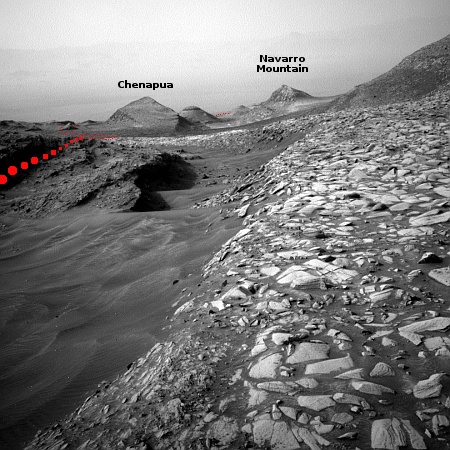Complex ridged terrain in ancient Martian crater
Cool image time! The picture to the right, rotated, cropped, reduced, and enhanced to post here, was taken on January 16, 2024 by the high resolution camera on Mars Reconnaissance Orbiter (MRO). Because an electronic unit for one of this camera’s filters has failed, causing a blank strip in the image center, I have filled in that gap using an MRO context camera image taken October 31, 2015.
The scientists describe this geology as “ridged terrain.” What I see is a surface that was like wet plaster once, and then a giant finger touched it and pulled away quickly, so that as it left some material pulled upward to create random ridges within the depression created by that finger.
These ridges are inside a very very ancient 110-mile-wide crater dubbed Margulis. According to the 2021 poster [pdf] of the scientists who did the first geological mapping of this crater, the crater floor “show remnants of sedimentary materials, suggesting the [crater was] subjected to widespread episodes of resurfacing and denudation.”
Though located in the dry equatorial regions, this ridged terrain suggests it formed suddenly when underground ice sublimated into gas, bursting upward to break the surface when the gas pressure became high enough.
» Read more
Cool image time! The picture to the right, rotated, cropped, reduced, and enhanced to post here, was taken on January 16, 2024 by the high resolution camera on Mars Reconnaissance Orbiter (MRO). Because an electronic unit for one of this camera’s filters has failed, causing a blank strip in the image center, I have filled in that gap using an MRO context camera image taken October 31, 2015.
The scientists describe this geology as “ridged terrain.” What I see is a surface that was like wet plaster once, and then a giant finger touched it and pulled away quickly, so that as it left some material pulled upward to create random ridges within the depression created by that finger.
These ridges are inside a very very ancient 110-mile-wide crater dubbed Margulis. According to the 2021 poster [pdf] of the scientists who did the first geological mapping of this crater, the crater floor “show remnants of sedimentary materials, suggesting the [crater was] subjected to widespread episodes of resurfacing and denudation.”
Though located in the dry equatorial regions, this ridged terrain suggests it formed suddenly when underground ice sublimated into gas, bursting upward to break the surface when the gas pressure became high enough.
» Read more











